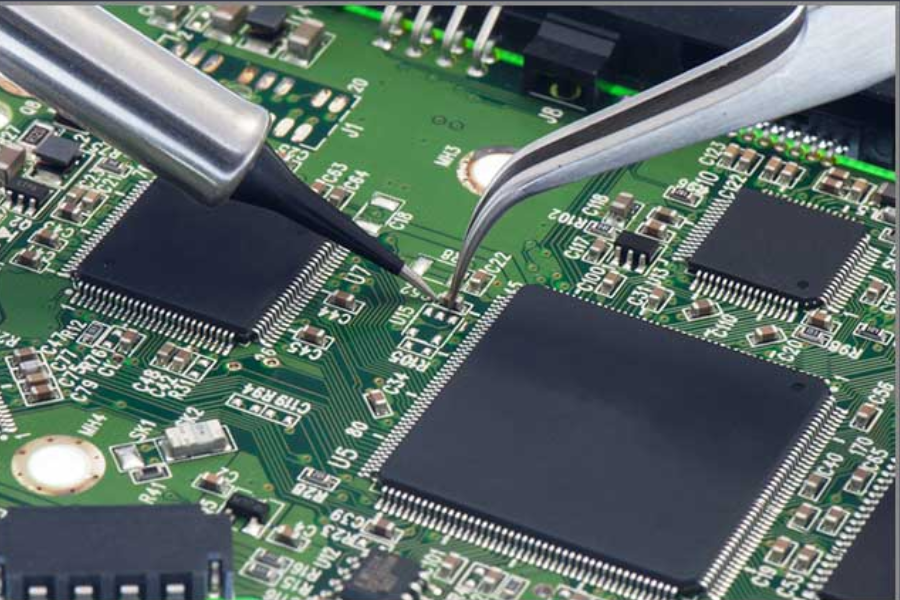When navigating the digital landscape, we often encounter various IP addresses that may seem perplexing at first glance, such as 127.0.0.1:62893 and 127.0.0.1:49342. These seemingly complex strings can be daunting to interpret, but a solid understanding of their mechanisms can reveal their potential utility.
In this article, we will delve into the intricacies of the IP address 127.0.0.1:62893 to enhance our troubleshooting capabilities and improve our overall computing experience. Additionally, we will explore common errors associated with this address and provide effective solutions to resolve them. Let’s dive in and demystify this topic!
Understanding 127.0.0.1:49342
If you find yourself wondering what the IP address 127.0.0.1:49342 signifies, you’re not alone. This IP address is divided into two distinct components, each serving a specific function. Let’s break it down:
- 127.0.0.1: This segment is known as the “LOCALHOST” address. It functions internally within your device, facilitating internal communication and enabling various processes to convey messages seamlessly. Essentially, it is a loopback address used for testing and network diagnostics.
- 62893: This number represents the port, which plays a crucial role in data transmission. Ports are like channels that allow applications to send and receive data. The port number 62893, while not as commonly used as others, occasionally serves specific purposes such as caching. Caching systems leverage this port to enhance performance and manage data more efficiently.
Understanding these components can empower you to troubleshoot and optimize your device’s performance more effectively.
Advantages of Using IP Address 127.0.0.1:49342
If you’re curious about the benefits of utilizing the IP address 127.0.0.1:49342, the points below will shed light on its various advantages:
Secure Way to Verify Suspicious Attempts:
By monitoring the port activity of the 127.0.0.1:49342 IP address, you can identify and deter suspicious and unauthorized access attempts. This practice enhances system security by allowing you to scrutinize potentially harmful activities.
Keep Bugs Away Without Internet Access:
Utilizing 127.0.0.1:62893 creates a safe, isolated environment ideal for development and testing. This environment helps programmers identify and fix bugs without exposing their applications to the internet, ensuring a secure and controlled testing phase.
Facilitates Networking:
The IP address 127.0.0.1:62893, commonly referred to as LOCALHOST, is instrumental in understanding fundamental network concepts like TCP/IP and server-client communications. It provides a practical framework for learning and experimenting with these concepts.
Simplifies Troubleshooting:
Localhost usage aids in pinpointing network-related issues, making the troubleshooting process more straightforward and efficient. By isolating the problem within a controlled environment, users can effectively diagnose and resolve network issues.
Provides a Separate Environment for Testing and Development:
Localhost offers an isolated space for various testing and development tasks, preventing conflicts with other applications. This separation ensures that tests do not interfere with the live environment, allowing for smoother development and debugging processes.
Understanding these advantages can help you leverage the full potential of the 127.0.0.1:49342 IP address in your projects.
Safety Considerations When Opening Port 62893 to the Public
Opening port 62893 to the public can pose significant security risks. Below, we explore the potential dangers associated with this practice:
Security Vulnerabilities with Memcached:
If you run Memcached on port 62893, it may introduce vulnerabilities that could be exploited by attackers. These vulnerabilities could provide unauthorized access to your system, compromising its security.
Increased Risk of Unauthorized Access:
Opening port 62893 to the public exposes your server to potential unauthorized access. Any user on the internet could attempt to connect to this port, potentially breaching your system’s defenses and gaining access to sensitive data or resources.
Potential for DOS Attacks:
Publicly accessible ports, including port 62893, are susceptible to Denial of Service (DOS) attacks. Attackers can overwhelm the port with excessive requests, causing system crashes or slowdowns, thereby rendering your system unstable and insecure.
Considering these risks, it’s crucial to assess the necessity of opening port 62893 to the public carefully. Implementing robust security measures, such as firewalls, access controls, and regular updates to mitigate vulnerabilities, can help minimize these risks if opening the port is unavoidable.
How Does IP Address 127.0.0.1:62893 Work?
The IP address 127.0.0.1:49342 operates through several key processes, outlined below:
- Application Interaction: When an application on your device initiates communication with another process, it uses the IP address 127.0.0.1, also known as Localhost. This address signifies that the application is directing its requests internally within your own system.
- Communication with Localhost: The application communicates with your system via Localhost (127.0.0.1), indicating its interest in accessing resources or services hosted on your device itself.
- Utilizing Port 62893: Port number 62893 facilitates this communication by establishing a connection with the operating system. This port serves as a gateway through which specific services or programs handle the application’s requests within the local environment.
Understanding these mechanisms helps illustrate how applications utilize the IP address 127.0.0.1:62893 to facilitate internal communications and manage processes efficiently within your system.
How to Resolve Errors Related to Port 62893
Follow these instructions to effectively troubleshoot and resolve errors associated with port 62893:
- Restart the Service: If the service using port 62893 is stopped, utilize appropriate scripts to restart it. This ensures that the necessary processes are running correctly and can handle incoming requests.
- Resolve Port Conflicts: If you encounter a port conflict, follow these steps to reconfigure applications:
- Configure Firewall Rules:
- Navigate to the control panel: Security and System > Windows Defender Firewall > Advanced Settings > Inbound Rules.
- Create a new rule allowing traffic on port 62893 for Localhost (127.0.0.1). This step ensures that incoming connections to this port are permitted by the firewall.
- Utilize Terminal Scripts: Consider using terminal scripts like iptables to configure firewall rules programmatically, providing flexibility in managing port settings.
- Configure Firewall Rules:
- Consult Application Documentation: Refer to the documentation of the applications utilizing port 62893. This resource offers insights into specific configuration requirements and troubleshooting steps tailored to the application’s functionality.
- Use Network Monitoring Tools: Employ tools such as Netstat or Isof to identify any existing applications already using port 62893. This verification step helps prevent conflicts and ensures smooth operation of services using the port.
By following these guidelines, you can effectively address errors related to port 62893, ensuring optimal performance and security of your applications.
Conclusion
In summary, IP address 127.0.0.1:49342 serves as a crucial tool in local network communications. It facilitates secure and isolated interactions within a device, allowing applications to test, develop, and troubleshoot without exposing them to external networks. By leveraging this localhost address and its associated port, users can enhance system security, streamline troubleshooting processes, and create a controlled environment for development tasks. Understanding its functions and implementing best practices in configuration and security helps ensure smooth operations and reliable performance across various applications.
Stay in touch to get more news & update on Buzz Discovers!











